Novel Nanomaterial Membranes for Efficient Separation
A special issue of Membranes (ISSN 2077-0375). This special issue belongs to the section "Membrane Fabrication and Characterization".
Deadline for manuscript submissions: closed (30 April 2024) | Viewed by 970
Special Issue Editors
Interests: nanomaterial membranes; functional membrane materials; 2D nanomaterials; water treatment; organic solvent nanofiltration
Interests: advanced oxidation processes; membrane water treatment; preparation and application of advanced nanomaterials
Special Issues, Collections and Topics in MDPI journals
Special Issue Information
Dear Colleagues,
Membrane-based technology has a broad range of separation abilities at the molecular level. It has been widely adopted in the field of separation because of its high separation efficiency, low cost, and simple modular design. Membrane materials play a crucial role in membrane separation performance. The most common membrane building blocks used to fabricate membranes are polymeric materials. However, traditional polymeric membranes still suffer various challenges such as wide pore size distribution, long-term stability, mechanical strength, and operation in harsh environments, which deteriorate their separation performance. To address this issue, various novel nanomaterials, such as graphene-based nanomaterials, metal–organic frameworks, covalent–organic frameworks, and MXene, have been explored as membrane materials to enhance separation efficiency. This has opened up a new research area centered around next-generation membranes fabricated by nanomaterials for separation purposes.
This Special Issue, titled “Novel Nanomaterial Membranes for Efficient Separation”, focuses on recent advances in nanomaterial-based separation membranes. The Special Issue will accept original research articles and reviews on various subject areas, including (but are not limited to) (i) design and synthesis novel membrane nanomaterials; (ii) the characterization of novel membrane micro-structures; (iii) the fabrication and modification of nanomaterial-based membranes; (iv) the enhancement of membrane separation efficiency; and (v) mass transport and separation mechanisms of novel nanomaterial membranes.
Dr. Xiao Sui
Dr. Zhiqiang Sun
Guest Editors
Manuscript Submission Information
Manuscripts should be submitted online at www.mdpi.com by registering and logging in to this website. Once you are registered, click here to go to the submission form. Manuscripts can be submitted until the deadline. All submissions that pass pre-check are peer-reviewed. Accepted papers will be published continuously in the journal (as soon as accepted) and will be listed together on the special issue website. Research articles, review articles as well as short communications are invited. For planned papers, a title and short abstract (about 100 words) can be sent to the Editorial Office for announcement on this website.
Submitted manuscripts should not have been published previously, nor be under consideration for publication elsewhere (except conference proceedings papers). All manuscripts are thoroughly refereed through a single-blind peer-review process. A guide for authors and other relevant information for submission of manuscripts is available on the Instructions for Authors page. Membranes is an international peer-reviewed open access monthly journal published by MDPI.
Please visit the Instructions for Authors page before submitting a manuscript. The Article Processing Charge (APC) for publication in this open access journal is 2700 CHF (Swiss Francs). Submitted papers should be well formatted and use good English. Authors may use MDPI's English editing service prior to publication or during author revisions.
Keywords
- nanomaterial
- membrane material
- separation membrane
- seapration efficiency
- membrane performance







